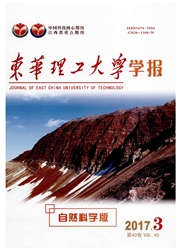

 中文摘要:
中文摘要:
以湘江下游河床沉积物元素和Pb同住素地球化学分析结果为基础,利用元素分析法和Pb同位素比值法对沉积物中人为源重金属比例进行定量计算。元素分析法估算得到重金属Bi,cu,Pb,zn,Cd,Mn,Sn,Sb等的人为源比例依次为92%-97%,50%~70%,77%-85%,58%-85%,89%~98%,60%-82%,85%~93%,78%~89%。铅同位素比值法估算得到沉积物中人为源Ph的比例在58%-60%之间,较元素分析法计算得到的人为源铅低25%~29%。依铅同位素法估算结果对元素分析法估算结果进行校正,得到重金属Bi,cu,Pb,zn,Cd,Mn,Sn,Sb等的人为源比例平均值依次为69%-73%、37%-53%、58%~64%、44%~64%、67%~73%、45%~6l%、63%~70%、58%~67%。
 英文摘要:
英文摘要:
It is based on the result of concentrations of trace elements and sediments from the lowermost Xiangjiang river. The proportions of anthropog Pb isotope of geochemical analysis of enic heavy metals enriched in the sed- iments are estimated based on both the element concentrations and the Pb isotopic composition. The results show that the anthropogenic proportions of heavy metals Bi, Cu, Pb, Zn, Cd, Mn, Sn and Sb are 92% -97%, 50% -70%, 77% -85%, 58% ~85%, 89% -98%, 60 % -82%, 85 % ~93% and 78% -89 %. Whereas the proportion of anthropogenic Pb estimated using the lead isotopic ratios is about 58% ~ 60%, which is 25% to 29%. According to the correction of elemental analysis, which is the results of the estimates of the lead isotope method, the anthropogenic proportions of heavy metals Bi, Cu, Pb, Zn, Cd, Mn, Sn and Sb are 69% -73% , 37% -53%, 58 % -64%, 44% -64%, 67% N73%, 45% -61%, 63% -70% and 58% -67% respec- tively.
 同期刊论文项目
同期刊论文项目
 同项目期刊论文
同项目期刊论文
 Geochemistry of heavy metal contamination of the acid mine drainage from the Hejiacun uranium mine i
Geochemistry of heavy metal contamination of the acid mine drainage from the Hejiacun uranium mine i Mineralogical and geochemical constrains on environmental impacts from waste rock at Taojiang Mn-ore
Mineralogical and geochemical constrains on environmental impacts from waste rock at Taojiang Mn-ore 期刊信息
期刊信息
